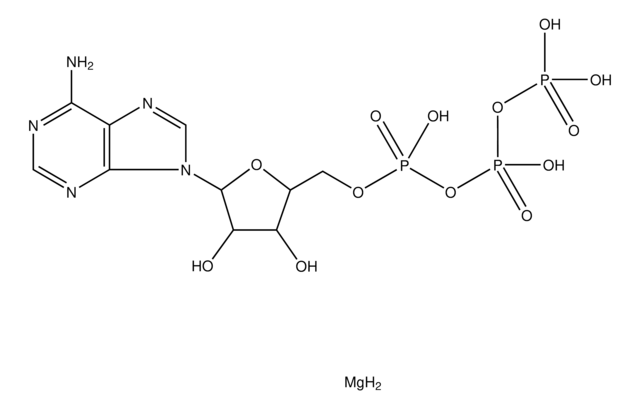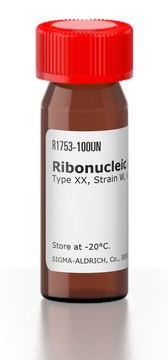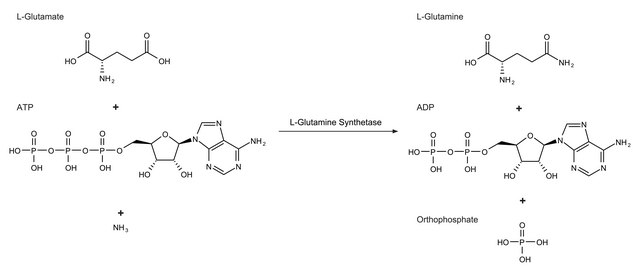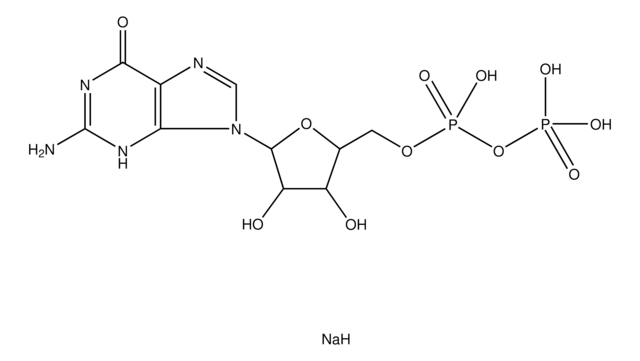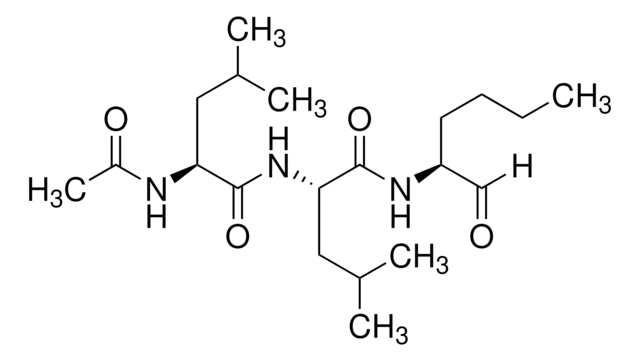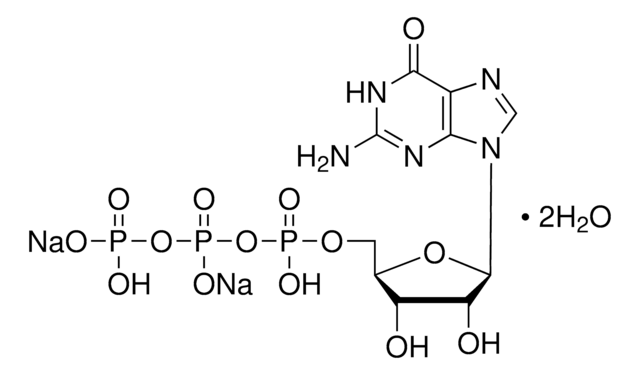A3646
Aminoacyl-tRNA Synthetase from Escherichia coli
buffered aqueous glycerol solution, ≥2,000 units/mg protein
Synonym(s):
ARS, tRNA-ligase
Sign Into View Organizational & Contract Pricing
All Photos(1)
About This Item
Recommended Products
form
buffered aqueous glycerol solution
Quality Level
specific activity
≥2,000 units/mg protein
shipped in
wet ice
storage temp.
−20°C
Application
Aminoacyl tRNA synthetase may be useful in the study of protein synthesis and regulation .
Biochem/physiol Actions
Aminoacyl tRNA synthetase attaches amino acids to their corresponding tRNA, which is essential for protein synthesis. Both classes of aminoacyl tRNA synthetases are multi-domain proteins .
Other Notes
Mixture of amino acid activating enzymes
EC Ligase sub-class 6.1.1
Quality
Crude
Unit Definition
One unit will activate and attach 1.0 picomole (10-12 mole) of labeled amino acid to tRNA in 10 min at pH 7.6 at 37 °C (amino acid used: L-arginine).
Physical form
Solution in 50% glycerol containing 10 mM Tris HCl, pH 7.2, 10 mM MgCl2, 30 mM 2-mercaptoethanol and 10 mM KCl
Analysis Note
Protein determined by biuret.
Signal Word
Warning
Hazard Statements
Precautionary Statements
Hazard Classifications
Skin Sens. 1
Storage Class Code
10 - Combustible liquids
WGK
WGK 2
Regulatory Information
常规特殊物品
Choose from one of the most recent versions:
Already Own This Product?
Find documentation for the products that you have recently purchased in the Document Library.
Irem Avcilar-Kucukgoze et al.
Cell chemical biology, 27(7), 839-849 (2020-06-20)
Arginyltransferase ATE1 mediates posttranslational arginylation and plays key roles in multiple physiological processes. ATE1 utilizes arginyl (Arg)-tRNAArg as the donor of Arg, putting this reaction into a direct competition with the protein synthesis machinery. Here, we address the question of
C L Harris
Journal of bacteriology, 169(6), 2718-2723 (1987-06-01)
Aminoacyl-tRNA synthetases from several strains of Escherichia coli are shown to elute as a high-molecular-weight complex on 6% agarose columns (Bio-Gel A-5M). In contrast, very little synthetase activity was observed in such complexes on Sephadex G-200 columns, suggesting that these
Lance W Rider et al.
The Journal of biological chemistry, 284(16), 10324-10333 (2009-01-14)
Dihydrouridine synthases (DUSs) are flavin-dependent enzymes that catalyze site-specific reduction of uracils in tRNAs. The mechanism of DUS 2 from Saccharomyces cerevisiae was studied. Previously published turnover rates for this DUS were very low. Our studies show that the catalytic
Ziwei Liu et al.
PLoS genetics, 17(7), e1009675-e1009675 (2021-07-30)
Emerging evidence indicates that tRNA-derived small RNAs (tsRNAs) are involved in fine-tuning gene expression and become dysregulated in various cancers. We recently showed that the 22nt LeuCAG3´tsRNA from the 3´ end of tRNALeu is required for efficient translation of a
C R Woese et al.
Microbiology and molecular biology reviews : MMBR, 64(1), 202-236 (2000-03-08)
The aminoacyl-tRNA synthetases (AARSs) and their relationship to the genetic code are examined from the evolutionary perspective. Despite a loose correlation between codon assignments and AARS evolutionary relationships, the code is far too highly structured to have been ordered merely
Our team of scientists has experience in all areas of research including Life Science, Material Science, Chemical Synthesis, Chromatography, Analytical and many others.
Contact Technical Service

